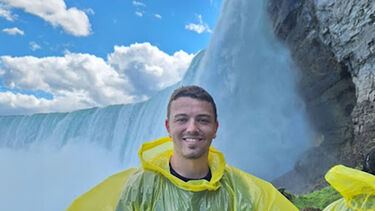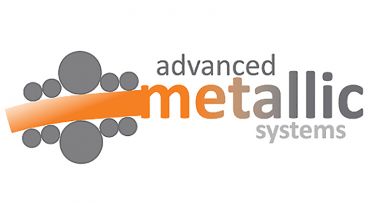Enhancing international partnerships in zirconium research
Understanding the effect of copper alloying concentration on damage mechanisms following irradiation of zirconium alloys

In the summer of 2023 Callum Andrew undertook a placement at Queen’s University Canada to compare the zirconium alloy he analysed in his PhD with a similar alloy that is used in Canadian nuclear reactors. The two materials were similar in composition but had differing copper concentrations, and he intended to find out whether the concentration of copper had an effect on irradiation damage mechanisms in zirconium alloys.
Zirconium alloys are utilised as nuclear fuel assembly material in water-moderated nuclear reactors, primarily due to their low neutron cross-sections – neutrons are not absorbed easily by zirconium, so they can pass through the alloy and interact with the water moderator instead. One limitation of zirconium alloys is that their hexagonal crystal structure and strong texturing from manufacture lead to the phenomenon of irradiation-induced growth (IIG). IIG is a macroscopic shape change in the alloy when exposed to irradiation which shortens the component lifespan. Developing alloys that resist IIG improves in-reactor efficiency – a critical aim in extending fuel lifespan alongside reducing nuclear waste.
Callum’s research is focused on the effects of copper on damage mechanisms in zirconium alloys following irradiation. Historically, copper has been an uncommon alloying element in zirconium, yet it is being added more frequently in later generations of fuel assembly materials. Consequently, copper has not been studied in great detail compared to elements such as tin or iron, so his PhD will expand on understanding of the behaviour of copper in irradiated zirconium alloys and its effects on irradiation-induced growth.
Over 3 months in 2023, Callum was on a placement at Queen’s University, Canada, where the Nuclear Materials Group, led by Professor Mark Daymond, conducts research on zirconium alloys utilised in CANDU nuclear reactors. One of the alloys studied at Queen’s has higher concentrations of copper than the material Callum researched for his PhD. He was interested to see what the concentration of copper as an alloying addition had on dislocation loop evolution in zirconium alloys following irradiation.
Callum took his material to Queen’s, where he was able to study the samples using transmission electron microscopy and X-ray diffraction line profile analysis. He also conducted a proton irradiation experiment on the CANDU material, and has since brought the CANDU material back to the UK for further examination.
Callum was mentored by Matthew Topping in irradiation experimental procedures and TEM techniques, Fei Long in TEM, and Levente Balogh in XRD LPA during his placement, as well as being helped by other students working at Queen’s. Consequently, he felt extremely welcomed during my stay. His opportunity to log so many hours on the TEMs, which has improved his technical abilities considerably in a short space of time.
Analysis has yielded fascinating results on the defect evolution of my material and the behaviour of Copper in Zirconium following irradiation. Moreover, the CANDU material has been prepared into TEM samples for analysis in the UK.
Furthermore the placement kick-started closer collaboration between the Zr Group at the University of Manchester and the Nuclear Materials Group at Queen’s University, with the hope to have placements at Manchester for Queen’s students as well as undertaking joint research ventures on nuclear fuel assembly materials.
This placement has improved my technical abilities in transmission electron microscopy, expanded my research focus by studying CANDU material, and allowed me to collaborate and build ties with researchers at Queen’s.
On top of all the great research opportunities, I have been able to experience the beautiful country of Canada, travelling to cities like Montreal and Ottawa, as well as seeing majestic sights like Niagara Falls. This has been a fantastic, once-in-a-lifetime experience which I will never forget.
Callum Andrew
Equipment Used:
FEI Tecnai Osiris TEM at the Reactor Materials Testing Laboratory,
FEI Talos TEM at the Department of Chemistry,
Proton accelerator at RMTL, Queen’s University.

Study with us
Study for a fully-funded PhD or EngD in Advanced Metallic Systems to explore innovative materials and manufacturing routes to increase sustainability and performance.
